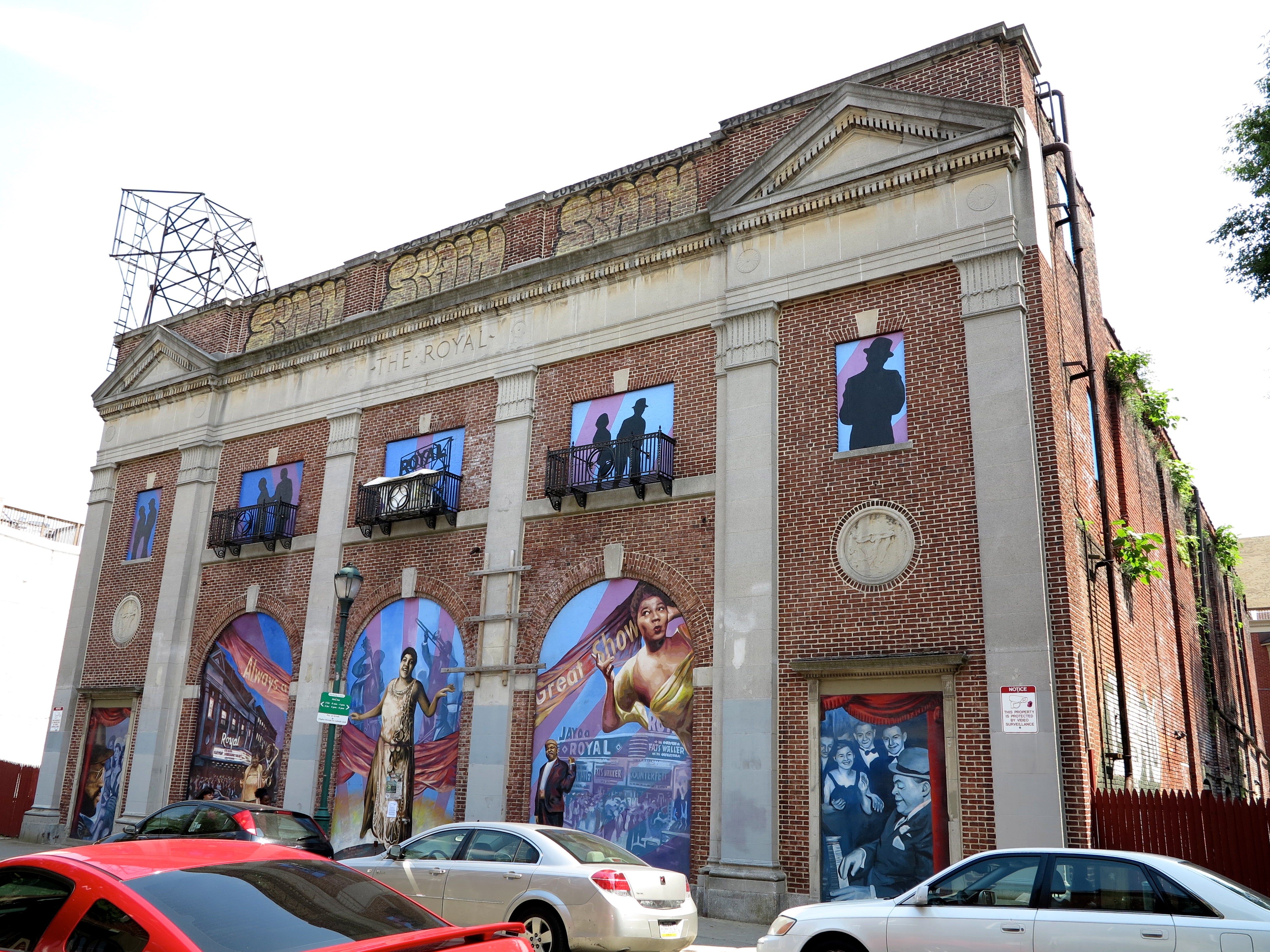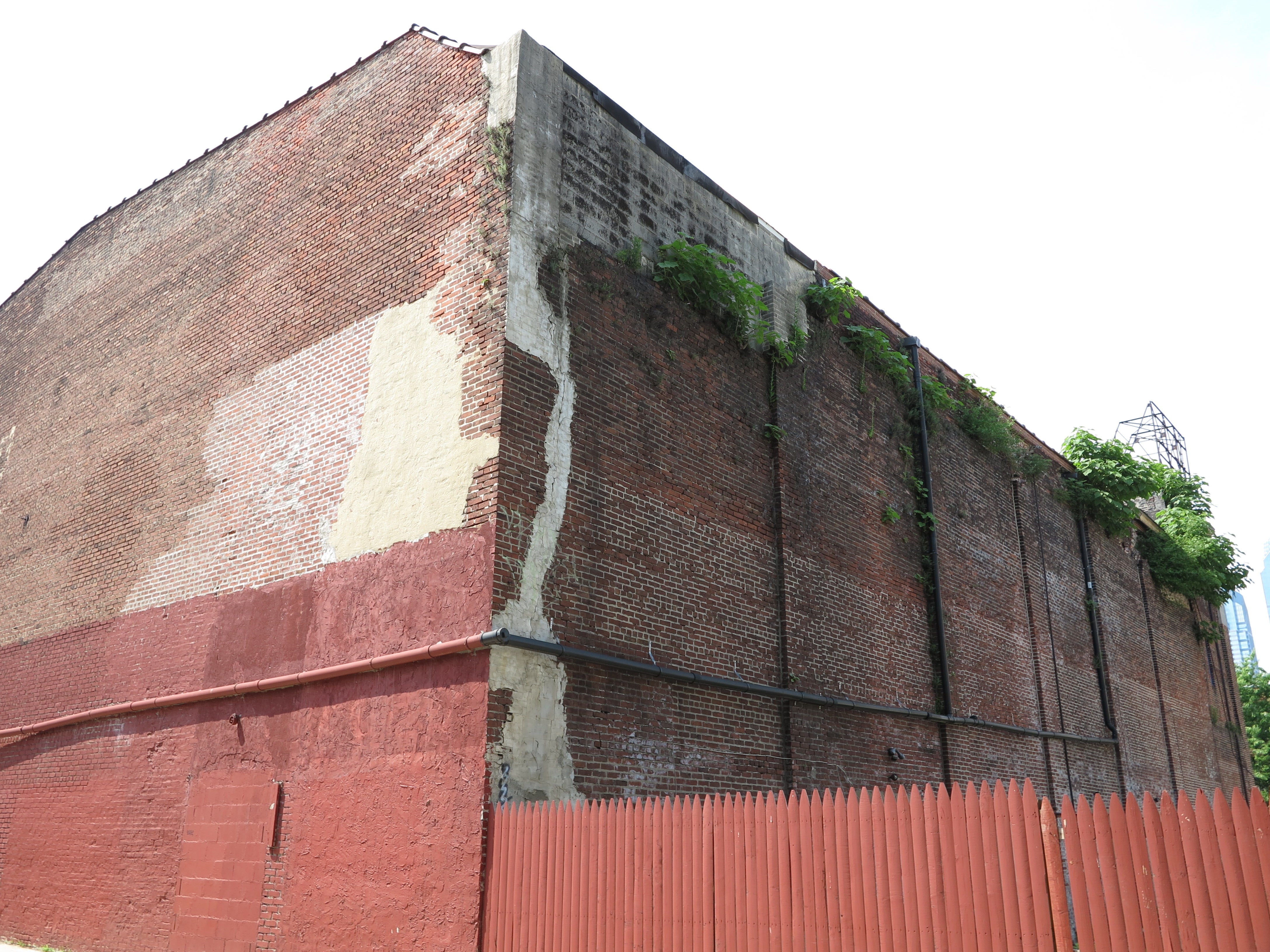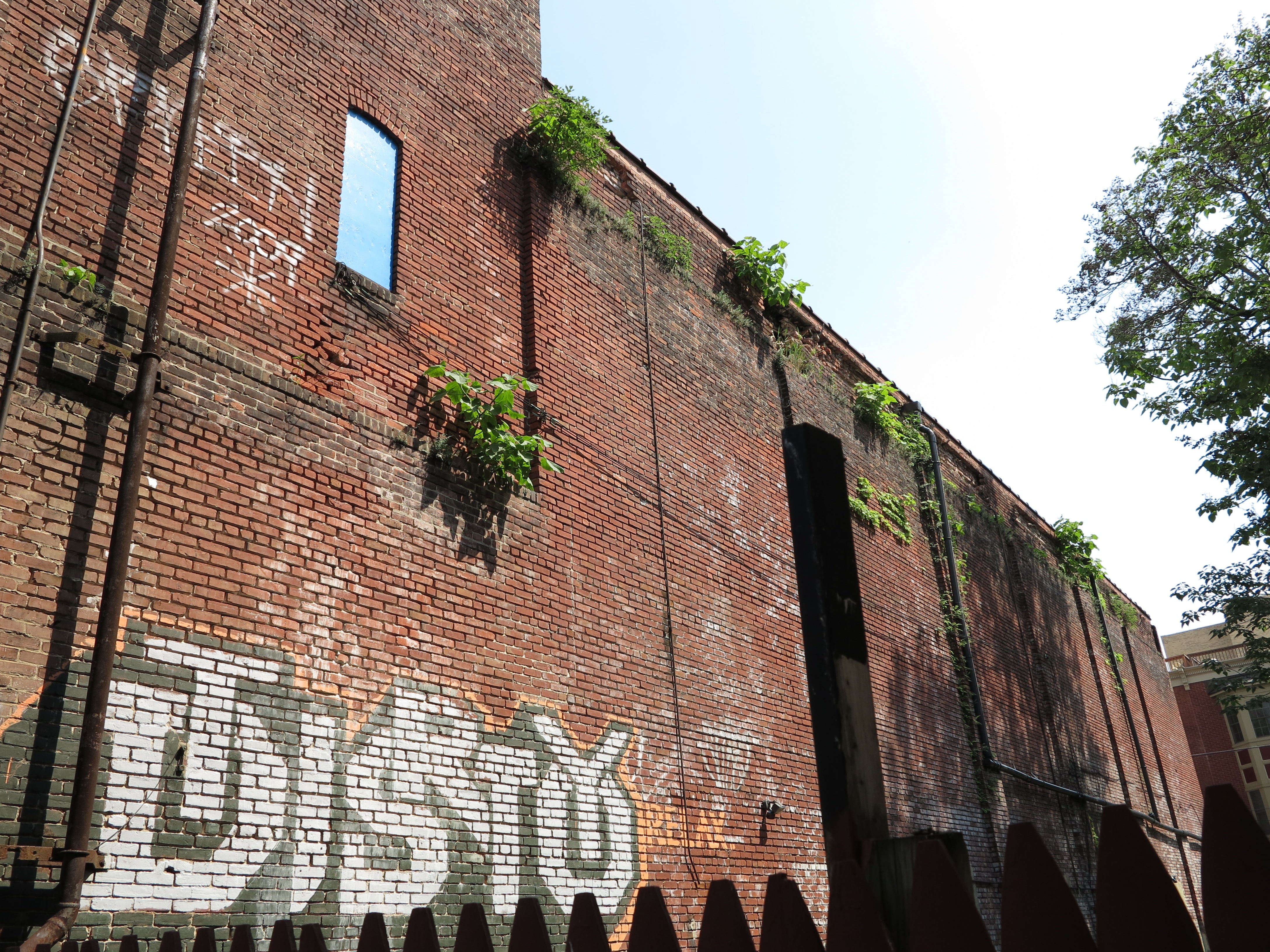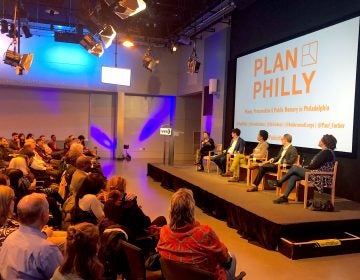Universal seeks OK to demolish most of Royal Theater
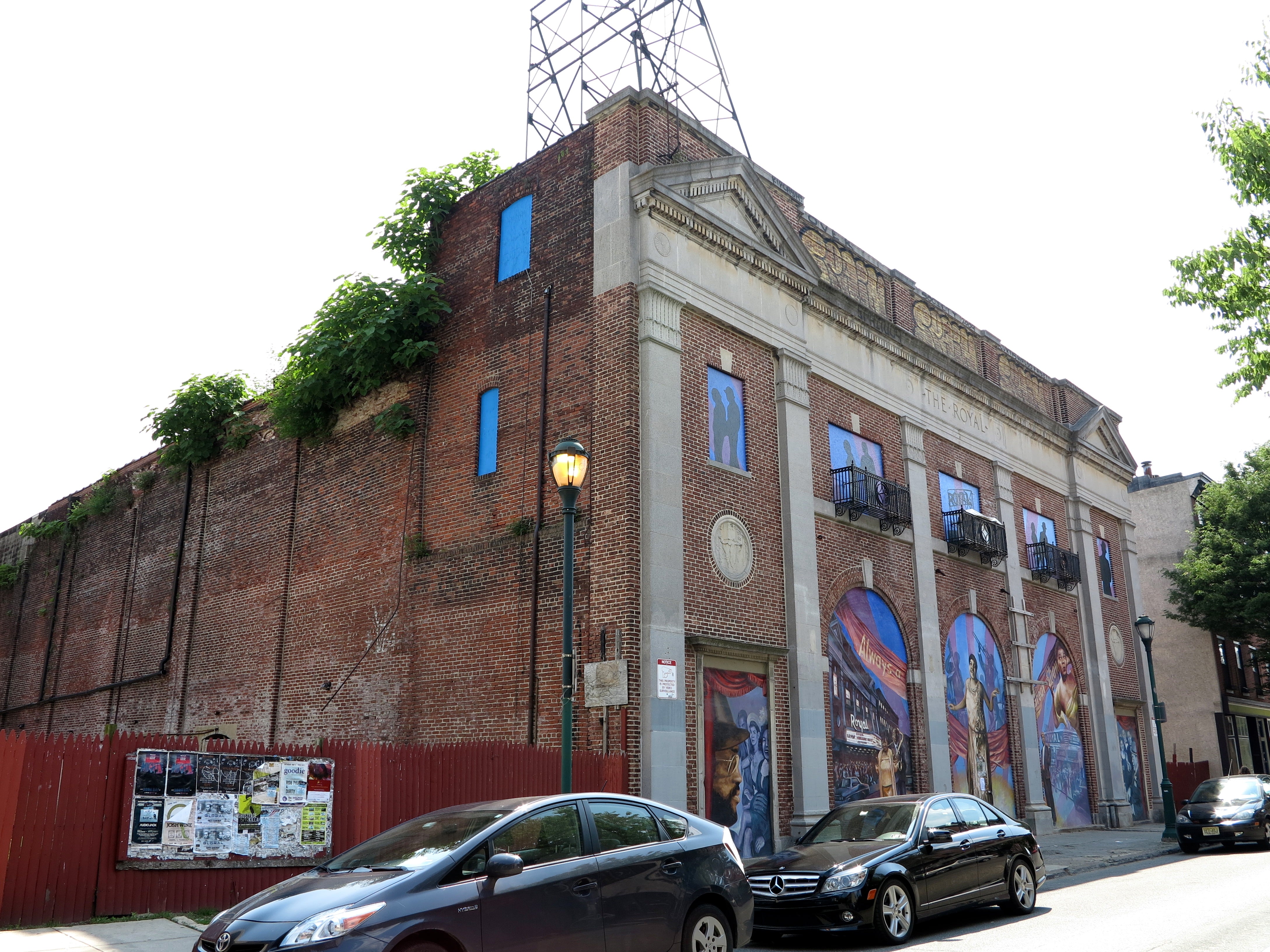
Universal Companies – the nonprofit titan founded by Kenny Gamble – has asked the Philadelphia Historical Commission for permission to demolish most of the famed Royal Theater on the 1500 block of South Street.
The application, filed April 29, proposes preserving the theater’s historic facade and converting a small portion of the building fronting South Street into mixed-use cultural and commercial space. The rest of the structure – including the entire seating and performance areas of the long-shuttered venue – would be demolished, making way for market rate housing and surface parking.
Universal’s filing took local community groups by surprise, and has angered many neighbors of the badly-neglected theater, which often has vegetation growing along the roofline.
Compounding that anger is Universal’s contention that the city should grant a partial demolition permit because the non-profit developer faces financial hardship. That assertion, made in a sworn affidavit accompanying the demolition application, is difficult to reconcile with the fact that at least one buyer has made a contingency-free $3.1 million offer for the Royal and some surrounding lots to Universal.
The would-be buyer, developer Ori Feibush, said that over the course of the last year, he had made five formal offers for the Royal, including a $4 million offer with a contingency for zoning approval of his proposed development. None of those offers was accepted by Universal, which acquired the Royal Theater in 2000 for just $250,000 from the Preservation Alliance of Greater Philadelphia.
A call to Universal Companies President Rahim Islam was returned by Devon Allen, a spokesman for the organization. Allen asked that questions be submitted in writing, but PlanPhilly had not received any answers by deadline.
In the affidavit, Universal Executive Vice President for Real Estate Tamelia Hinson states renovating the existing structure would cost $3.4 million, a sum deemed by the organization to be “economically unfeasible.”
There is little question that the building’s interior badly damaged. The theater – which was one of the city’s preeminent African-American cultural venues in its day – has run to ruin since its closing in 1970. Much of the damage was done before Universal took ownership, but neighbors say the building has only deteriorated further in the years since.
“The property was wrested away from the hands of a speculator who was a poor steward, and now over a decade later we have a similar situation with Universal,” said Marcus Iannozzi, President of the South Street West Business Association. “It’s a terrible irony that the person who was supposed to rescue the Royal wants to tear it down.”
Universal’s affidavit argues that the organization’s hands are tied, and that “maintaining this building in its current useless condition has become a hardship to Universal.” Those costs include landscaping expenses (for cutting down the vegetation growing on the roof), a $145,000 project in 2007 to stabilize the structure, and $40,000 in prospective repairs to shore up falling bricks on the east and west walls, a dangerous condition that has been cited by the city’s Department of Licenses and Inspections.
The affidavit further states that Universal tried diligently to find a viable buyer for the theater – which was listed for sale last summer – but failed. The application offers some vague information on one potential purchaser but notes that “in the end, they did not purchase the property.” The affidavit makes a fleeting reference to other potential buyers, but says “neither were interested in taking on the challenges offered by the building.”
Feibush disputes that characterization. “I was chasing after them for nine months,” he said. “It’s a little disingenuous to cry financial hardship when you’ve had bona fide offers in writing for millions of dollars more than you paid for the property.”
Indeed, the Historical Commission is deeply interested in learning more about the offers Universal has received for the Royal Theater.
“We’ve sent them a letter alerting them we consider their application to be incomplete. We’re not processing anything until they elaborate on and document the offers they received for the property,” said Jonathan Farnham, executive director of the Historical Commission. “If Feibush’s offer is deemed to be a reasonable offer, and he argues he could adaptively reuse the building in a profitable way, that would really undercut Universal’s claims.”
But Feibush and at least some of the Royal’s neighbors are not content to wait. As reported by Philadelinquency, Juan Levy, a neighbor, filed an Act 135 complaint against Universal in Common Pleas Court. Act 135 – the Abandoned and Blighted Property Conservatorship Act – gives neighbors and interested parties the right to petition the court to name a conservator to take over properties that have become a public nuisance. In his filing, Levy proposes that Feibush be named conservator.
“Act 135 was absolutely a last resort. It was after we had exhausted every other option,” said Feibush, who said he was paying the legal costs.
Feibush stressed that he had consulted with neighbors and community organizations, and noted accurately that, when Act 135 is used, the conservator is barred from taking much of a profit on the deal.
However, like Universal, the plan Feibush is assembling for his proposed conservatorship would demolish most of the original structure, while maintaining the facade. That fact is likely to generate opposition in the preservation community and among many residents who consider the Royal perhaps the neighborhood’s most important historic building.
“We understand wholeheartedly that preserving these historical buildings is a huge challenge,” said Andrew Dalzell, programs coordinator for the South of South Neighborhood Association. “But this community has demonstrated that it wants to preserve as much as possible.”
Unlike Universal, Feibush’s development would match the envelope of the existing building. He proposes re-using the external bricks, and says “the end result will be identical in scale” to what is there now.
Feibush wants to put in underground parking, and he would reserve the rear of the new structure along Kater Street for five 16-foot wide homes.
On the South Street side, Feibush proposes 11,000 square feet of commercial space on two floors, with apartments on the third and fourth floors. He hopes for an anchor retail tenant on the first floor, and an educational or community tenant on the second floor.
While this plan would seem to preserve more of the external look and feel of the existing structure, it is not at all clear how the Historical Commission would view this plan, given that it too proposes demolishing most of the existing structure.
Iannozzi declined to comment on the Act 135 filing, saying his organization was preparing a statement for release later. But he was familiar with Feibush’s plan, and said “we understand the building may need to be partially dismantled.”
“The bigger picture here is that there is very high demand along our corridor for more retail and commercial space, and we’re running out of inventory,” Iannozzi said. “Having vacant lots that are undeveloped and having a major anchor like the Royal crumbling is hampering our progress and crippling our ability to continue developing.”
Dalzell said that SOSNA has always hoped “the Royal would be a catalyst for growth. Now it’s more like a capstone to the corridor’s growth.”
Founded by Gamble in 1993, Universal has been a remarkable force for redevelopment, constructing over 400 new residential units, much of them on what were some of the most badly blighted blocks in South Philadelphia. But the non-profit has shunned engagement with neighborhood groups on the question of the Royal’s future, and frustrations are now boiling over.
“Universal has never discussed its plans with us. They have never reached out to us to partner and find a solution. There’s no communication,” Iannozi said.
“What Universal has done in Philadelphia has been very, very positive. Their investments in Point Breeze and South of South have been critical in getting those neighborhoods going,” Feibush said. “But enough is enough. They got the Royal when I was having my bar mitzvah.”
WHYY is your source for fact-based, in-depth journalism and information. As a nonprofit organization, we rely on financial support from readers like you. Please give today.



